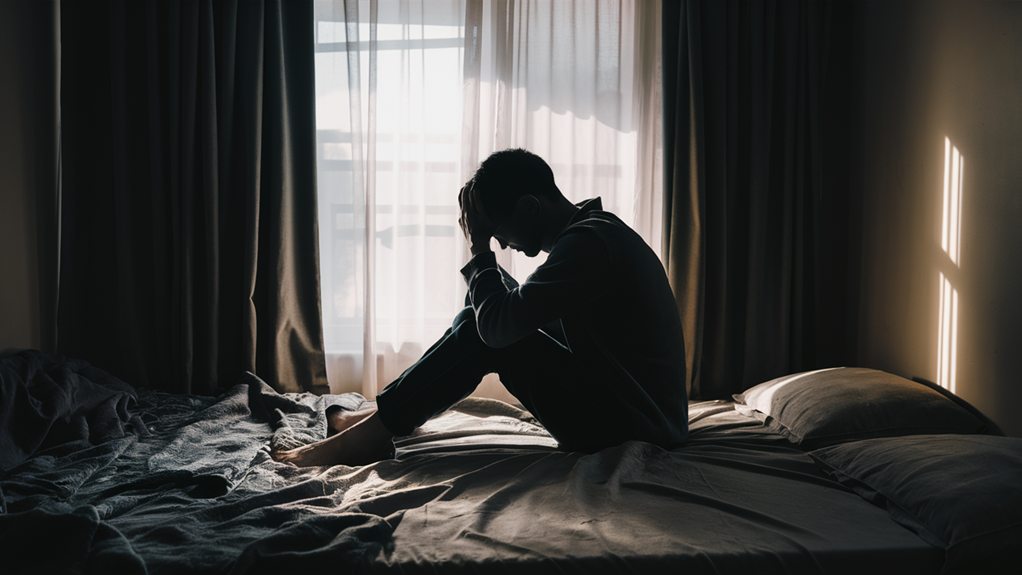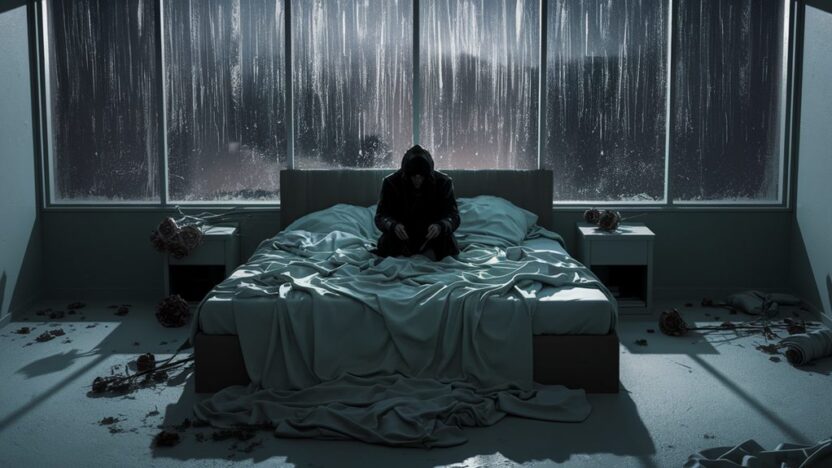Depression comes in several distinct forms that can affect your mental health differently. Major Depressive Disorder, the most common type, involves persistent sadness and loss of interest lasting at least two weeks. Persistent Depressive Disorder, or dysthymia, causes milder but long-term symptoms that continue for years. Bipolar Depression includes both depressive and manic episodes, while Seasonal Affective Disorder typically occurs during darker winter months. New mothers may experience Postpartum Depression after giving birth, causing intense sadness and bonding difficulties. Understanding these different types helps you identify symptoms and find the most effective treatment options.
Major Depressive Disorder

Major depressive disorder plagues millions of people worldwide as the most common form of clinical depression. You'll find that this condition affects how you think, feel, and handle daily activities, creating challenges that can last for extended periods.
When you're experiencing major depression, you might notice persistent feelings of sadness, hopelessness, and a lack of interest in activities you once enjoyed. This disorder can be triggered by a combination of genetic, biological, environmental, and psychological factors, making it vital to understand its complexities in order to seek effective help symptoms of anxiety disorders.
Your symptoms need to last at least two weeks for a diagnosis, and they often include changes in your sleep patterns, appetite, and energy levels. You might find yourself sleeping too much or too little, losing or gaining weight unexpectedly, and feeling constantly fatigued.
It's important to understand that major depression isn't just feeling sad; it's a serious medical condition that can affect your ability to work, study, and maintain relationships. You might experience difficulty concentrating, making decisions, or even getting out of bed in the morning.
If you notice these symptoms, it's essential to reach out to a mental health professional who can provide proper diagnosis and treatment options, including therapy, medication, or a combination of both.
Persistent Depressive Disorder
While major depressive disorder involves intense episodes of depression, persistent depressive disorder (PDD), also known as dysthymia, represents a longer-term form of depression that can last for years. This type of depression can be influenced by various factors, including genetics and environmental triggers, which may contribute to its development and persistence.
If you're living with PDD, you'll likely experience a constant, low-grade depression that affects your daily life. You might find yourself feeling down most days, struggling with low self-esteem, and having difficulty feeling joy in activities you once enjoyed.
Unlike major depression's severe episodes, PDD's symptoms are less intense but more enduring, often lasting two years or more in adults and one year in children and teens.
You'll notice that dysthymia can affect various aspects of your life, from your eating and sleeping patterns to your energy levels and concentration. It's common to feel hopeless, indecisive, and consistently tired.
While these symptoms mightn't completely disable you, they can considerably impact your relationships, work performance, and overall quality of life. The good news is that with proper treatment, including therapy and sometimes medication, you can learn to manage your symptoms and work toward feeling better.
Bipolar Depression

Depression in bipolar disorder presents a unique challenge, alternating between periods of deep depression and episodes of elevated mood called mania. It's important to recognize that how depression affects relationships can play a significant role in managing bipolar disorder.
You'll find that during depressive phases, symptoms can be more severe and complicated than those found in typical depression, often resembling atypical depression patterns. These episodes can make you feel intensely sad, hopeless, and exhausted, while mania brings periods of extreme energy and euphoria.
When you're experiencing bipolar depression, you might notice dramatic shifts in your sleep patterns, appetite, and energy levels. Unlike regular depression, you'll need to be especially careful with treatment, as traditional antidepressants can sometimes trigger manic episodes.
You might feel overwhelmed by racing thoughts during mania, followed by crushing lows that make daily tasks seem impossible. The unpredictable nature of these mood swings can affect your relationships, work, and overall quality of life.
It's essential to work with a mental health professional who understands bipolar disorder, as they can help you develop strategies to manage both the depressive and manic phases, creating a more stable emotional foundation.
Seasonal Affective Disorder
Seasonal Affective Disorder (SAD) affects millions of people during darker winter months, causing a distinct pattern of depression that follows the changing seasons. This type of depression can be particularly challenging for teens, who may already be managing various life changes and stressors.
You'll typically notice symptoms beginning in late fall and continuing through the winter, when daylight hours become shorter and you're exposed to less natural sunlight. If you're experiencing SAD, you might feel a significant drop in your energy levels, changes in your sleep patterns, and a persistent feeling of sadness.
Understanding teen depression is essential as it may manifest differently compared to adults.
Common symptoms of seasonal affective disorder include:
- Feeling tired most of the day, even after getting enough sleep
- Craving carbohydrates and experiencing weight gain
- Withdrawing from social situations and activities you usually enjoy
- Having difficulty concentrating or completing daily tasks
You're not alone if you're dealing with SAD, and there are effective treatments available. Many people find relief through light therapy, which involves sitting near a special lamp that mimics natural sunlight.
You might also benefit from regular exercise, maintaining a consistent sleep schedule, and working with a mental health professional who can help you develop coping strategies specific to seasonal depression.
Postpartum Depression

A significant mental health challenge that affects up to 15% of new mothers, postpartum depression extends far beyond the typical "baby blues" that many women experience after childbirth.
If you're dealing with postpartum depression, you might feel overwhelmed by intense sadness, anxiety, or hopelessness that doesn't go away after a few weeks following delivery. It's important to recognize that making certain lifestyle changes and building a strong support system can be effective in managing your feelings during this time empowering strategies.
You'll notice that postpartum depression can make it difficult to bond with your baby, complete daily tasks, or feel joy in activities you once loved.
Common symptoms you might experience include trouble sleeping (even when your baby's asleep), changes in appetite, difficulty concentrating, and feeling disconnected from your little one. These feelings aren't your fault, and you're not being a bad parent.
It's essential to know that help is available, and you don't need to suffer in silence. Your healthcare provider can recommend various treatment options, including counseling, support groups, and medication that's safe while breastfeeding.
With proper support and care, you can recover from postpartum depression and build a healthy, loving relationship with your baby.



